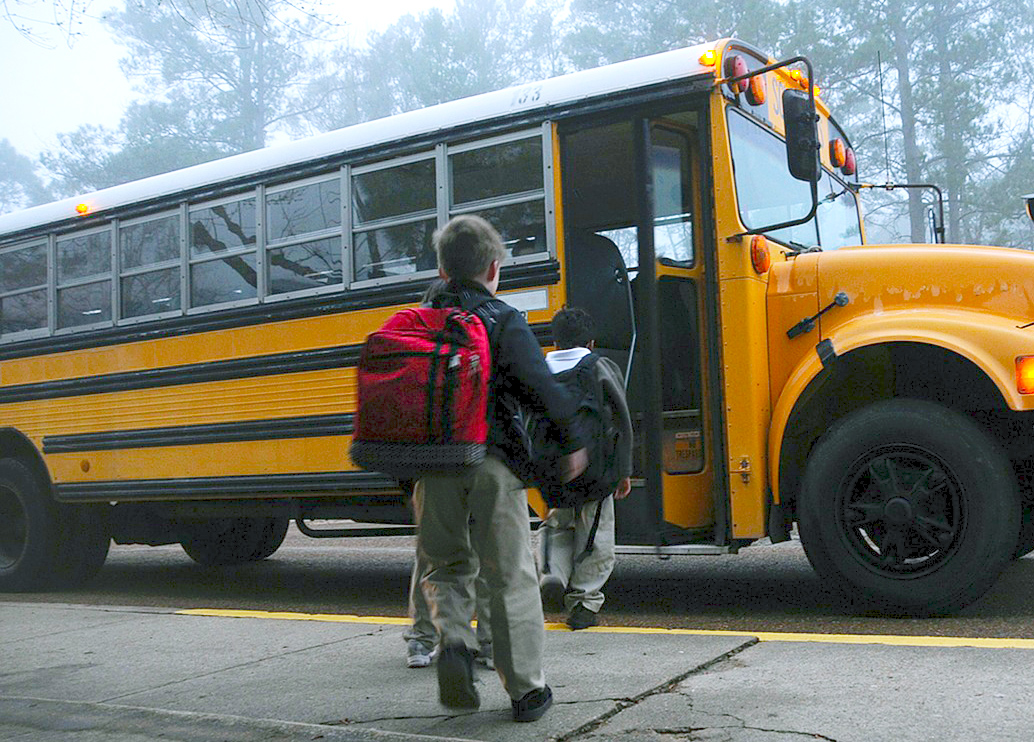
It’s back to school time and many people will be shopping for new backpacks for the year. Backpacks are a great option compared to messenger bags because the weight is being supported by the back and abdominal muscles – the strongest muscles in the body. Even still, it’s easy to fall into the trap of overloading a backpack or carrying it incorrectly which can lead to strain or injury.
Heavy backpacks can have a negative effect on a kid’s body. When heavy weight (a backpack filled with books for example) is placed on the shoulders incorrectly, the force of that weight can pull a child backward. To compensate, children may arch their backs or bend forward at the hips which can cause the spine to compress unnaturally. The heavy weight might also cause some kids to develop shoulder, neck, and back pain and potentially lead to poor posture.
Here are a few pointers from us and the American Academy of Pediatrics for choosing the right backpack and making sure it’s used it properly.
1. Wear it the right way.
When worn correctly, the weight in a backpack is evenly distributed across the body. Make sure kids use both shoulder straps. Wearing a backpack over just one shoulder – as many kids do – causes leaning to one side in order to offset the extra weight. This could lead to lower and upper back pain and strain on the shoulders and neck. Also tighten the straps enough for the backpack to fit closely to the body. The pack should rest evenly in the middle of the back – not sag down to the buttocks.
2. Watch the weight.
Some kids experience back aches because they carry around an entire locker’s worth of schools supplies and books on their backs. Most doctors and physical therapists recommend that kids carry no more than 10% to 15% of their body weight in their packs — but less is always better. If you don’t know what that 10% to 15% feels like, use the bathroom scale (for example, the backpack of a child who weighs 80 pounds shouldn’t weigh more than 8 to 12 pounds). Carrying a heavy pack also changes the way kids walk and increases the risk of falling, particularly on stairs or other places where the backpack puts students off balance.
3. Thick straps are best.
Go for a bag with two wide, padded shoulder straps. Backpacks with tight, narrow straps that dig into the shoulders can interfere with circulation and nerves. These types of straps can contribute to tingling, numbness, and weakness in the arms and hands.
4. Choose a lightweight fabric.
Although leather backpacks might look cool, it’s best to stick with a traditional lightweight canvas pack that doesn’t add a lot of weight to your child’s load. It can be challenging enough to make sure the backpack doesn’t get too heavy without adding in unnecessary weight for a style preference.
5. Go for a padded back.
A padded back provides increased comfort, plus it protects kids from being poked by sharp edges on objects (pencils, rulers, notebooks, etc.) inside the pack.
6. Balance the weight.
Look for a bag with multiple compartments which can help distribute the weight more evenly. Another great feature offered on some backpacks is a waist belt which assists in more evenly dispersing the weight across the body.
7. Encourage safe habits.
A lot of the responsibility for packing safely rests with kids. Encourage them to adopt these habits to help keep the load light:
– Instead of carrying the entire day’s worth of books in the backpack, use a locker or desk frequently throughout the day.
– Don’t tote unnecessary items which add extra pounds to a pack.
– Only bring home the books needed for homework or studying each night.
– Pick up the backpack with care – bend at the knees and grab the pack with both hands when lifting a backpack to the shoulders.
– Use all of the backpack’s compartments to balance the weight. Put heavier items, like books, closest to the center of the back.
8. Watch for signs of strain.
You may need to adjust kids’ backpacks and/or reduce how much they carry if they:
– struggle to get the backpack on or off
– have back pain
– lean forward to carry the backpack
If your child has back pain or numbness or weakness in the arms or legs, talk to your doctor or physical therapist.
9. To wheel or not to wheel?
Although packs on wheels (which look like small, overhead luggage bags) may be good options for students who have to lug around really heavy loads, they’re extremely difficult to pull up stairs and to roll through snow. Check with the school before buying a rolling pack; many schools don’t allow them because they can pose a tripping hazard in the hallways.
We hope everyone gets off to a great start this school year! Keep these tips in mind and help protect your child from back strain caused by carrying a too-heavy backpack.
Source: KidsHealth.org
